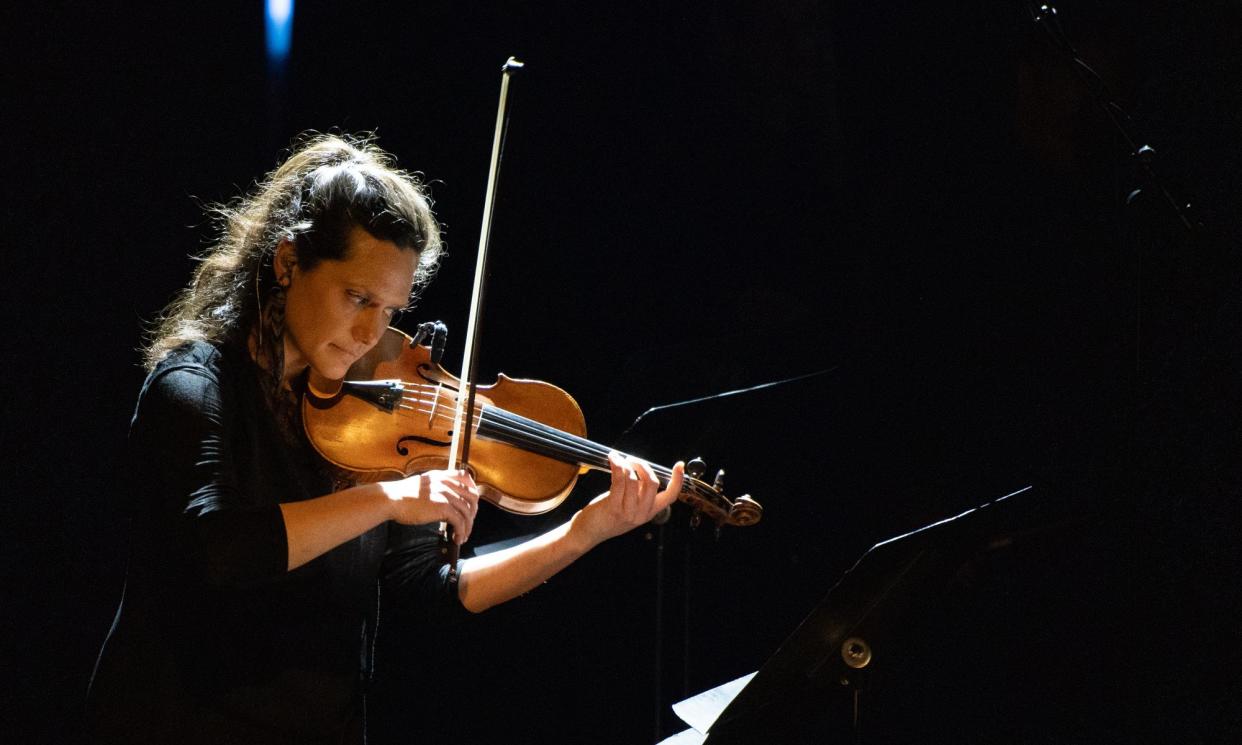Sansara/Manchester Collective review – an exquisitely colourful tribute to Rothko Chapel

Morton Feldman’s Rothko Chapel was composed in 1971 to be performed in a very singular place, the multi-faith chapel in Houston, Texas, built by Dominique and John de Menil to house 14 of Mark Rothko’s darkest, bleakest canvases. Scored for solo viola, chorus, celesta and percussion, it has become one of Feldman’s most widely performed works, and it provided the starting point for the latest of the Manchester Collective’s programmes, for which the group was joined by the chamber choir Sansara.
The popularity of Rothko Chapel in comparison with Feldman’s other works of the 1970s and 80s is partly thanks to its manageable dimensions. At around half an hour long it is considerably shorter than most of his late masterpieces – but it’s also more approachable, more structurally straightforward and explicitly tonal than much of his music. The achingly beautiful melody that the solo viola discovers in the final moments provides the resolution the whole work has been seeking. In this exquisitely moulded performance, Ruth Gibson’s unaffectedly eloquent viola playing made it seem both conclusion and consolation.
Three works commissioned as responses to Rothko Chapel were included in the sequence that the 12 voices of Sansara performed with the collective before the Feldman. In fact, Isobel Waller-Bridge’s No 9 referenced not the chapel paintings but a different Rothko, White and Black on Wine, with its insistent string phrases overlaid on the mostly wordless chorus. In Songs and Interludes, meanwhile, Katherine Balch found a connection between Rothko and Feldman and her own music in Virginia Woolf, abstracting phrases from Woolf’s essay A Room of One’s Own as a text, and punctuating her choral setting with percussion. Edmund Finnis’s Blue Divided By Blue also had an assembled text, using only words found in the titles of Rothko’s paintings. Finnis describes it as “a lament, written in remembrance of absent friends”; the viola leads the string quartet in mourning, until the choir is eventually reduced to wordlessness, and only the sound of bells is left.


